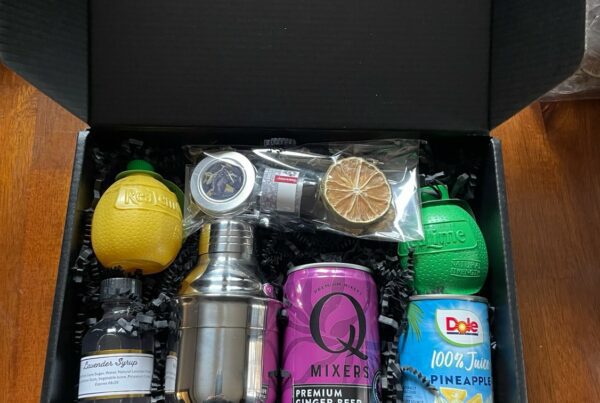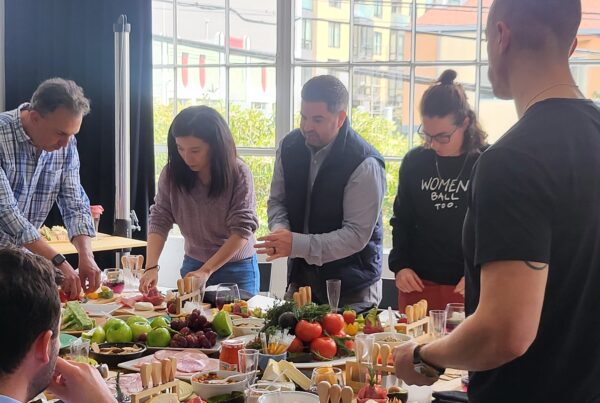Life is meaningless without happy relationships.
We all need human connection, whether with family, friends, or colleagues. And if you look back over your life and think of your fondest memories, they usually involve a particular moment of interaction.
And more often than not, that interaction included good food — because humans have an affinity for bonded over food.
Like, since the beginning of time.
One thing that the pandemic taught us all is that human connections are the elixir of life. Strong bonds make it easier to conquer the toughest challenges, and we need to feel that we are not alone when these difficulties arise.
This is not just the case in our personal lives — it extends to our professional lives too.
When we feel that we are a part of a team, we are more motivated, creative, and productive than when working in isolation. Unfortunately, the shift to remote working threatened to damage team dynamics severely. As a result, team-building strategies underwent a metamorphosis as companies looked for new ways to connect their teams in a virtual setting.
Rockoly has designed the perfect solution. Why not connect your staff through an online cooking workshop (led by a real chef) and let them enjoy the age-old tradition of bonding over food?
Table of contents:
- History Of
- Dutch Baby Pancake
- Cinnamon Roll
- Chocolate Soufflé
- Fruit Tarts
- Cheesecake
- Rockoly’s Cooking Workshop
The Sweet Life with Rockoly
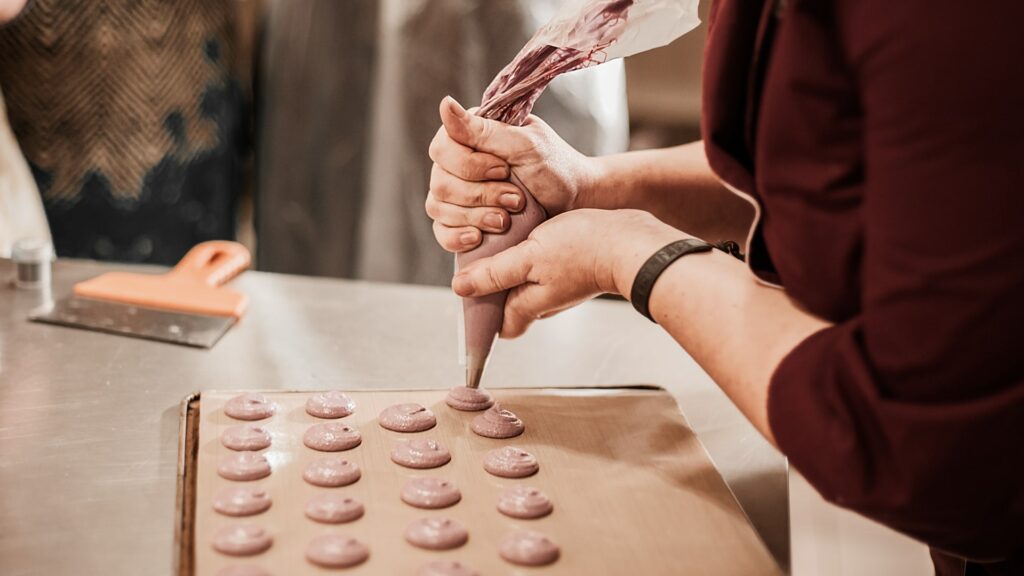
There is something comforting about a delicious dessert after a great meal.
So many of us always leave room for a sweet treat, even if it means sharing it rather than losing out. Rockoly’s online workshop menus include a selection of mouth-watering desserts and sweet delights that will leave your staff buzzing with a sugar-high — not to mention the added euphoria that comes from having a grand connecting with others on the team.
But why do we indulge in sweet things? And why do we do it at the end of a meal?
Let’s look at some of the history and traditions surrounding many of our favorite desserts.
A History of Desserts
Before we can understand the history of sweets and desserts, we actually have look at the history of sugar.
While we do find those who prefer savory over sweet, humanity has always had an affinity for the former. Our earliest ancestors collected honey from beehives, and its use has been recorded throughout history.
In fact, the ancient Egyptians, Arabs, and Chinese ate candied fruits and nuts in honey — an early form of candy.
Then, around 500 BC, the Persians discovered sugar cane. This was a well-kept secret until the 4th century. Alexander The Great brought sugar cane back to Macedonia, and crops spread throughout the Mediterranean countries. However, it was only in the 12th century that sugar cane spread through the rest of Europe during the Crusades.
Sugar was marketed as a spice by the Venetians and was sold by apothecaries as an expensive medicinal remedy. The wealthy started to buy it and use it to create luxury confectioneries like jams and marzipan that they enjoyed as digestives after their meals.
The Story of Chocolate
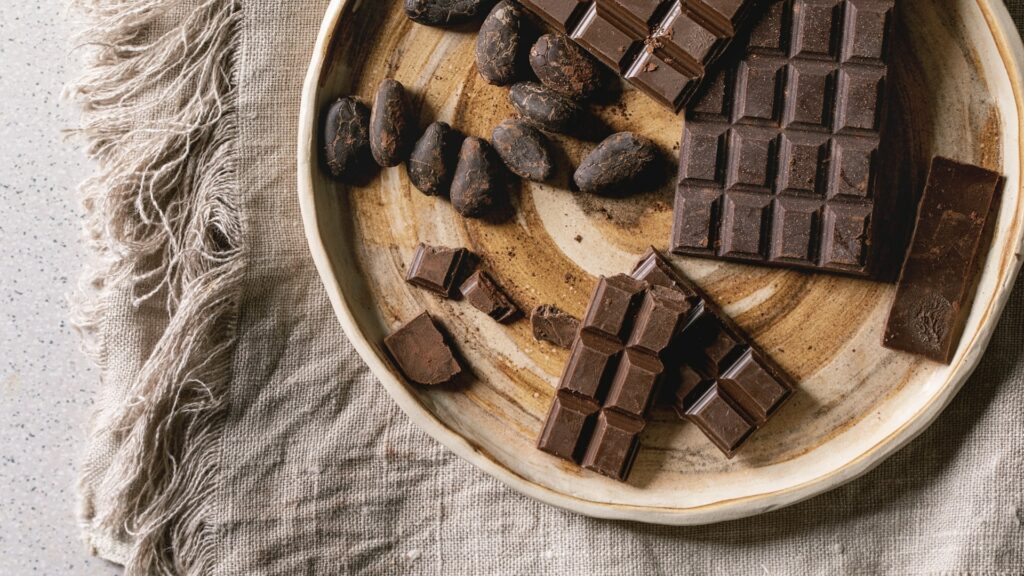
Chocolate began its life story on the other side of the Atlantic, with the cocoa bean being revered by both the Mayans and the Aztecs.
‘Theobroma cacao,’ which translated to ‘food of the gods’, was reserved for nobility. They concocted a spicy drink called ‘chocolatl,’ made from roasted cocoa beans mixed with vanilla and spices. Spanish conquistadors witnessed chief Montezuma enjoy his hot cocoa water and took some beans home as a gift to the Spanish King.
The Europeans didn’t enjoy the bitter taste of raw cocoa and added sugar, which made it more popular.
By the 17th century, wealthy people in Europe were devouring the expensive, luxury drink. However, it wasn’t until the 19th century that chocolate took the form we know today.
Life’s Short. Eat Desserts First.
In the Middle Ages, desserts were reserved for the wealthy.
Dishes such as jelly, preserved fruit, and wafers were the order of the day. Strangely, during medieval times, most puddings were made of meat. Today, there are still traces of these savory delights in English and Scottish culture — consider the likes of black pudding, which is pretty much a blood sausage.
The Tudors started the tradition of mince pies at Christmas, but they had deep religious significance.
The pies contained thirteen ingredients, representing Jesus and his twelve disciples. The list of ingredients seems traditional to start — currants, prunes, cloves, saffron — but strangely, they also contained mutton, representing the shepherds from the nativity. In addition, the pies were initially shaped like a crib until Oliver Cromwell banned this practice.
French favorite, blancmange — a sweet pudding made with cream and sugar — was originally a chicken stew infused with almonds. By the 18th century, desserts transformed into the more conventional sweet delights that we enjoy today.
Oh, by the way — Rockoly’s online team-building workshops have a decadent selection of desserts for your team to create and enjoy together. We mentioned that already? Oops!
Go Dutch (Kind of)

Also known as a Dutch puff, Hootenanny, or a Bismark, the Dutch baby pancake is a large, thick pancake baked in the oven or cooked on the stovetop in a large skillet.
Interestingly enough, it is not Dutch at all. It’s German.
It originated in the early 1900s, when a Seattle café served a plate of small German pancakes that were extremely popular. However, the German word for “German” is Deutsch (pronounced Doit-sh).
Mispronunciation led to them being known as Dutch baby pancakes, and after it evolved to a supersized version, the name stuck. (And FYI, the Dutch word for “Dutch” is Nederlands [pronounced “Nay-der-lunds] — not confusing at all!)
Create this delicious Deutsch delicacy with Rockoly. The perfect breakfast, brunch, or dessert, its soft middle, and crispy edges will make you want to make some more. Drizzle with a smooth orange sauce that is tangy and sweet and pair with warm honey sbiten.
Cinnamon Role Play

There is nothing more comforting than the smell of freshly baked cinnamon buns.
They originated in Sweden and are still a traditional favorite of the Scandinavian region. The Swedes even celebrate Cinnamon Roll Day (Kanelbullens dag) on October 4th. The Romans discovered cinnamon in Sri Lanka and brought it to Europe centuries ago.
Rockoly has amazing cinnamon roll workshops, where they’re topped off with a sweet and delicious buttermilk glaze. The smell of these freshly baked goods will delight your senses, especially when paired with an expert-led coffee tasting workshop.
That way, your team can go through the origin of their favorite cup-a-joe, coffee bean roasting techniques, and tasting notes.
You Gotta Lava Chocolate Soufflé

There is a bit of a debate about the origin of this decadent, oozing treat.
New York chef Jean-Georges Vongerichten claims to have invented it in 1987, but French chocolatier Jacques Torres insists it was already enjoyed in France many years before.
Vongerichten explained that his invention was the result of a happy accident. In his haste, he took a chocolate sponge cake from the oven too soon, leaving the center runny.
Rockoly’s Chocolate Lava Soufflé is the perfect workshop for those with a serious sweet tooth.
This kingpin of desserts is served with a fresh strawberry sauce and can be paired — once more — with an expert-led coffee tasting workshop.
The Art of Tart
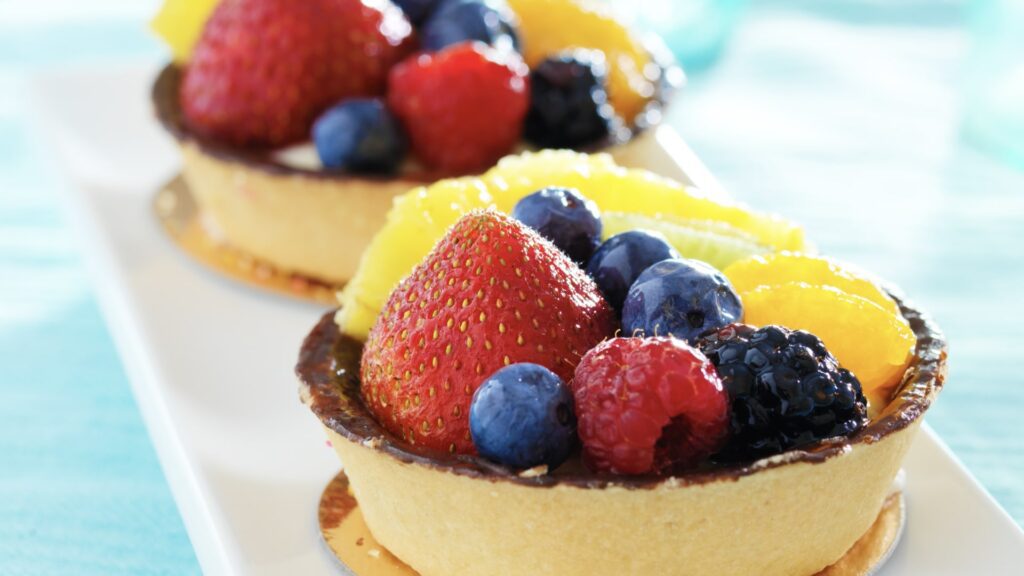
The fruit tart was a new take on a fruit pie when the filling was placed on a shortcrust base.
Pies have been an everyday treat in Europe since the 1350s. When shortcrust was invented in 1550s, tarts of all sorts became a regular treat in medieval courts. The open face of a tart was an opportunity to create a colorful works of art, to impress guests, and add to the festive mood.
Rockoly’s rainbow fruit tart is a colorful treat, packed with fresh fruit and a sweet filling, all in a homemade pastry. The artfully arranged fruit topped with a jelly glaze is aesthetically pleasing and delicious.
Serve with a bottle of dessert wine for the perfect treat!
History in the Baking
The Greeks created the first cheesecake as early as 2,000 B.C. It was considered an excellent energy source and was used by Olympic athletes during the ancient games.
However, it was nothing like the cake we enjoy today.
Instead, it was made with flour and wheat. Today, many variations of this favorite dessert exist. The Italians favor ricotta cheese as a base, and the Germans prefer cottage cheese. Specialty cheesecakes use exotic ripe cheeses, add other flavors such as salted caramel and chocolate, and various fruit coulis often punctuate this decadent delight.
Bake Sweet Desserts With Rockoly

Don’t let the size of Rockoly’s blueberry lemon cheesecake bites fool you.
They burst with flavor and infuse the perfect combination of zesty lemons and sweet blueberries. These baked bits of heaven are the perfect dessert, and one bite will not be enough. Add to your experience with a champagne pairing or coffee tasting.
But that’s it folks! The team and chefs at Rockoly wants to bring your team together with a fun and interactive cooking class. So, tell us about your remote team, select a meal from our curated menu, and get started.
Your team-building event is customizable and hassle-free — we deliver all the ingredients to your team!
A professional chef will guide your online team-building workshop through video conferencing, helping everyone create exciting meals together.
In addition to creating and baking desserts, Rockoly’s cooking workshops encourage connection, boost morale, and foster socialization among teams. We even add fun group games and entertainment for your team during the workshop.
Get in touch today if you’re ready to bring your team through Italian travel and cuisine with a Rockoly workshop.





